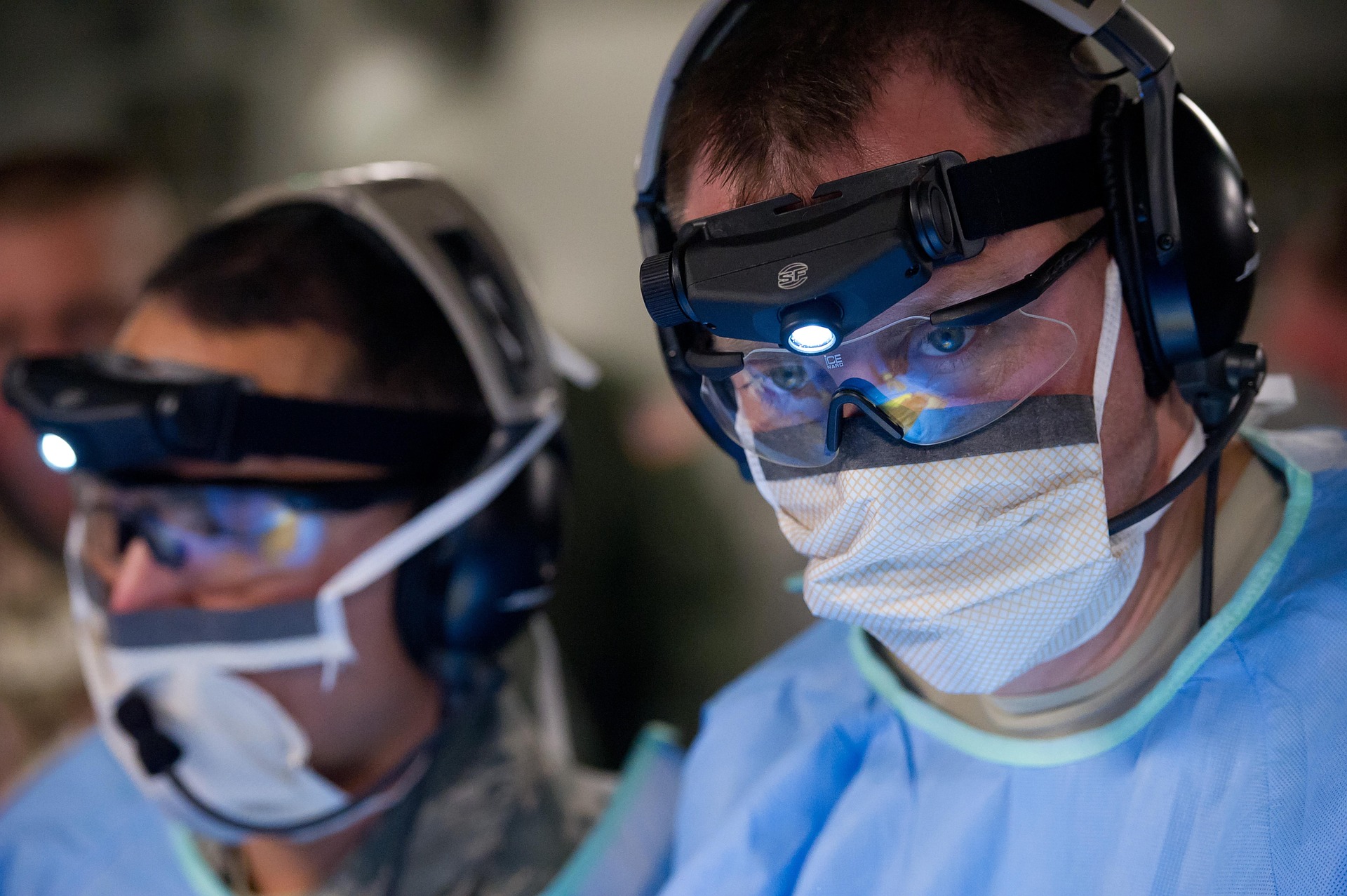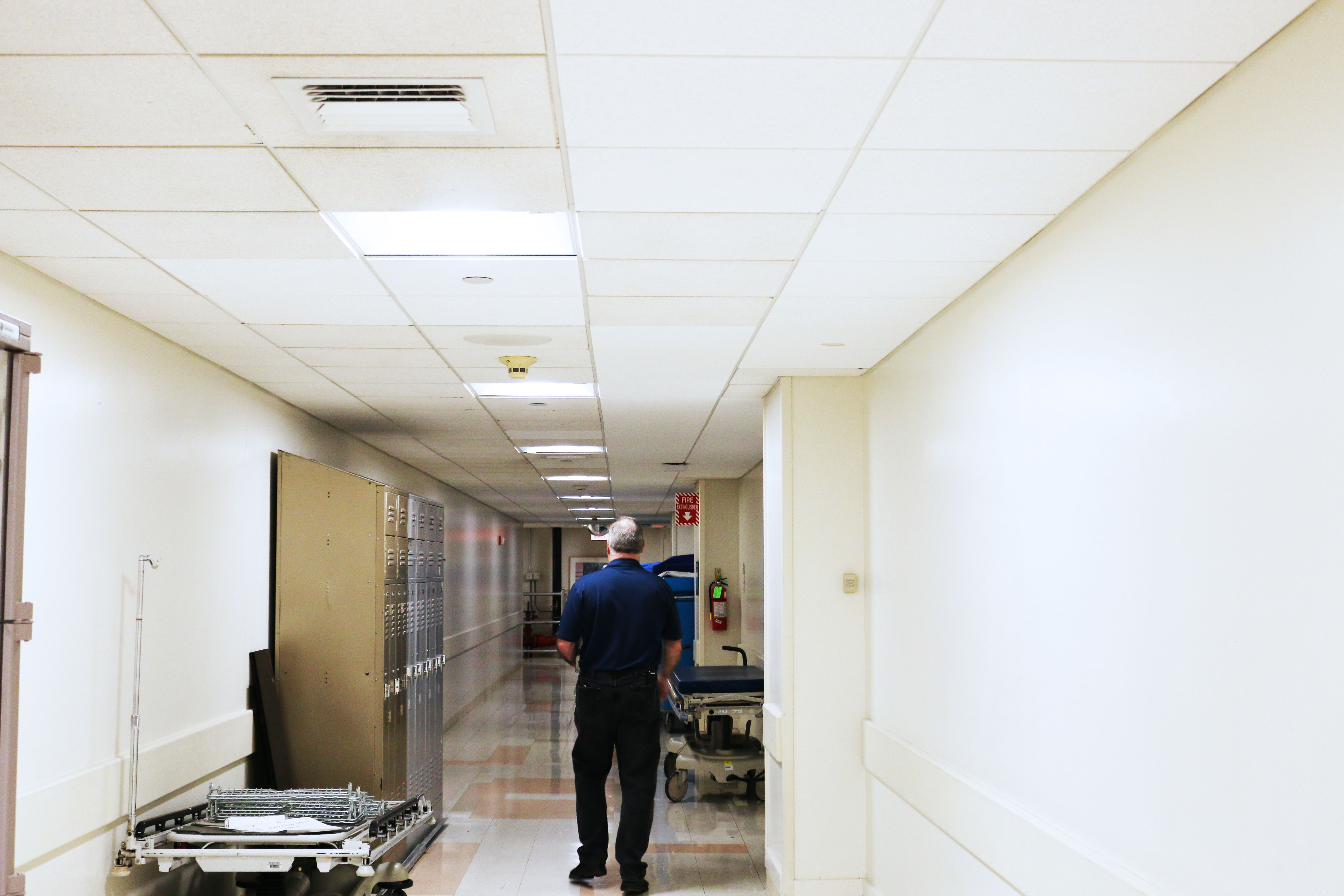Healthcare | January 22, 2021
How to Manage Operating Room HVAC for Efficiency
Hospitals demand high energy use from HVAC systems, operating rooms in particular. The ANSI/ASHRAE/ASHE codes that govern operating room design have strict requirements for temperature, humidity, ventilation air changes and pressurization that result in high energy use. There are control strategies however that can be utilized to mitigate the energy use and still comply with the codes. One of these strategies is controlling air changes to two modes – code required air changes during occupied hours and reduced air changes during unoccupied hours.
Standard hospital ACH
Due to variations in state building codes, the minimum required operating room air changes per hour (ACH) could be 15 to 20 ACH. Most hospitals however operate at 20 to 25 ACH with some as high as 30 ACH. There is an additional requirement that sufficient outside air be introduced to the HVAC system that there is 4 ACH of outside air. At 20 ACH overall, the outside air requirement would be 20% of the airflow.
ASHRAE Standard 170 (Ventilation of Health Care Facilities) and many state codes allow the number of air changes to be reduced “when the space is unoccupied providing that the required pressure relationship to adjoining spaces is maintained while the space is unoccupied and that the minimum number of air changes indicated is reestablished anytime the space becomes occupied.” Code such as these ensure an operating standard across hospitals and healthcare facilities.
How does reducing ACH save energy?
A typical operating room HVAC system cools room air to as low as 52° F and then reheats the air back to room temperature, an energy intensive activity. Conditioning of required outside air and humidity control can be energy intensive as well, so reducing the volume of air treated will significantly reduce energy consumption.
How can ACH be controlled for occupied/unoccupied conditions?
The following methodology assumes there is a typical modern OR HVAC/control system with a Building Automation System (BAS) controlling a supply variable air volume (VAV) box and an exhaust VAV box to the operating room to maintain accurate air changes and pressure requirements.
- The air flow volume for occupied hours should be measured and adjusted by an air balancer to a set point that meets or slightly exceed code requirements.
- The air flow volume for unoccupied hours should be measured and adjusted by the air balancer to a set point that maintains code required positive pressure of 0.01 in WG. Reduction to 8 ACH has typically been found to maintain stable positive pressure conditions.
An effective way to set up the operating rooms for occupied/unoccupied control is to schedule the majority of the operating rooms in unoccupied mode during unoccupied periods.
For example, 20 out of 23 operating rooms set in unoccupied mode from 6 P.M to 6 A.M. The remaining 3 operating rooms stay in occupied mode for emergency use. Installation of occupancy sensors in the unoccupied mode operating rooms would convert back to operating mode set point on 5 minutes of continuous occupancy detected.
Energy Savings Example
The efficiency team at Mantis Innovation utilized this strategy for a large hospital with 23 operating rooms that were originally set up for 28-30 ACH round the clock with actual use of operating rooms occurring 6 AM – 6 PM, Monday – Friday. The occupied hours ACH was reset to 22 air changes per hour and the unoccupied air changes were set at 8 ACH. The resulting annual savings was over 900,000 kWh and 11,000 therms of gas.
Many hospital ORs can benefit from an similar ACH strategy, still operating up to code, but gaining a tremendous amount of savings from this tactic.
Related Posts
Discover more content and insights from Mantis Innovation

A Prescription for Energy Efficiency in Healthcare
Hospitals are among the most energy intensive facilities in the United States. With the rising cost of energy, many healthcare facilities are seeking ways to cut costs without compromising the

Why Healthcare Energy Efficiency is (Still) Such a Big Deal
US healthcare facilities consume, on average, 2.6 times the energy of their commercial counterparts. Lifesaving equipment, surgeries, recovery spaces and preventative and routine care simply use far

Inside a Hospital Energy Audit
Commercial/industrial facilities engage engineers to perform energy assessments to uncover potential efficiencies. These audits can take anywhere from an hour to multiple days, depending on the

Hospital Energy Use: Taking Advantage of Energy Efficiency
According to the U.S. Department of Energy, healthcare is one of the top five energy-consuming building categories and accounts for nine percent of energy use in commercial buildings. With utility